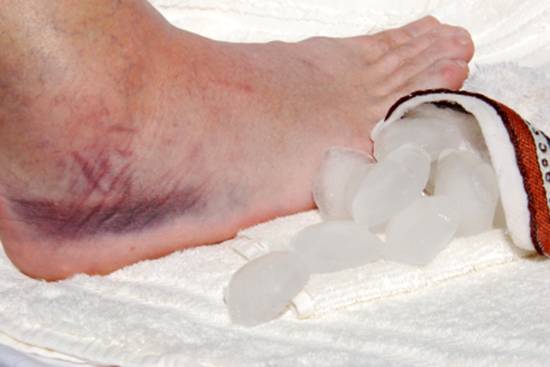Sprains
A sprain is tearing a ligament, either partially or completely. Sprains, like strains, are graded according to their severity. Ligaments are composed primarily of collagen fibre and possess a great deal of tensile strength which they require to perform their job as stabilisers of joints. Ligaments also help to encourage a normal range of motion, and prevent unwanted movements.
When ligaments are stretched beyond their pliable length, they will not recoil, and will remain slightly stretched, possibly leading to laxity and reduced stability in the affected joint. If a ligament is stretched beyond its fullest range of motion, it will tear. Ligaments can tear at or near their attachments into bone or anywhere along their length. Severe sprains are often associated with dislocation or fractures.
First degree sprain
A first degree sprain is a minor partial tearing of fibres. There will be minimal fibre damage, local pain and tenderness and minimal loss of function. The joint should still retain its stability and have no obvious deformity, aside from possible minimal swelling and associated muscle spasm. Recovery is normally quick (two to three weeks) given appropriate treatment and management.
Second degree sprain
A second degree sprain is a more severe partial tearing of ligament fibres. There may be pain at rest, pain on weight-bearing, and pain during stress testing. There is likely to be considerable swelling and loss of function. A return to fitness is usually within three to six weeks.
Third degree sprain
A third degree sprain is a complete rupture. There will be severe pain at the time of injury, but later the pain may be less that that of a second degree sprain. There will also be severe loss of joint function, associated muscle spasm and instability. A complete rupture will often lead to a rapid swelling around the joint.
This grade of sprain requires surgical repair or at least immobilization, prior to a comprehensive rehabilitation programme. Return to full fitness commonly takes three to four months or longer.
